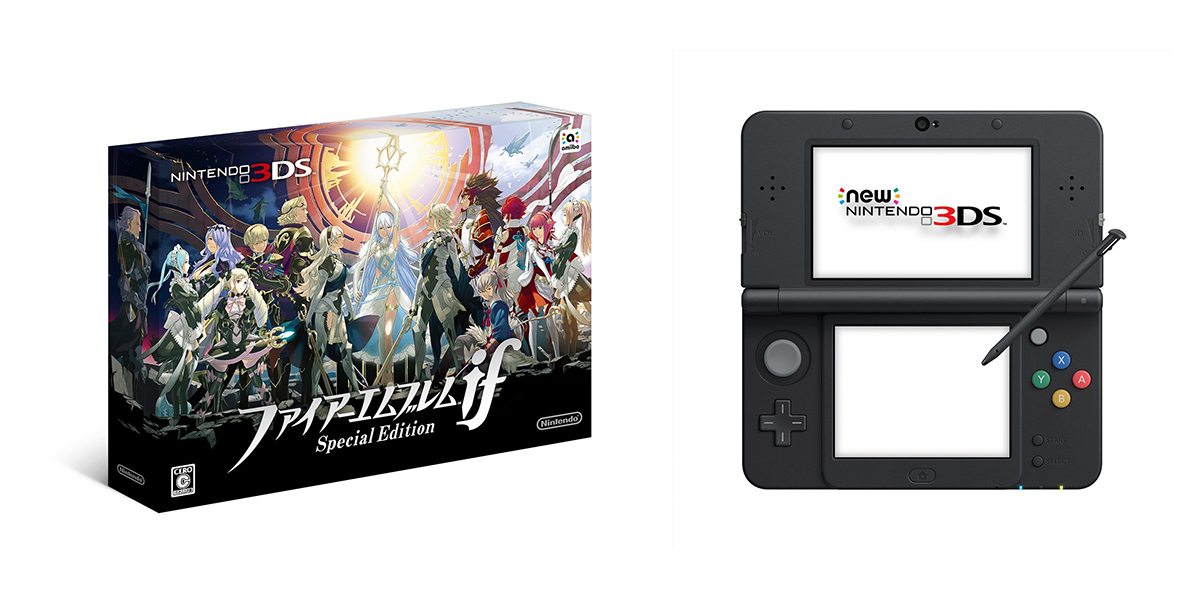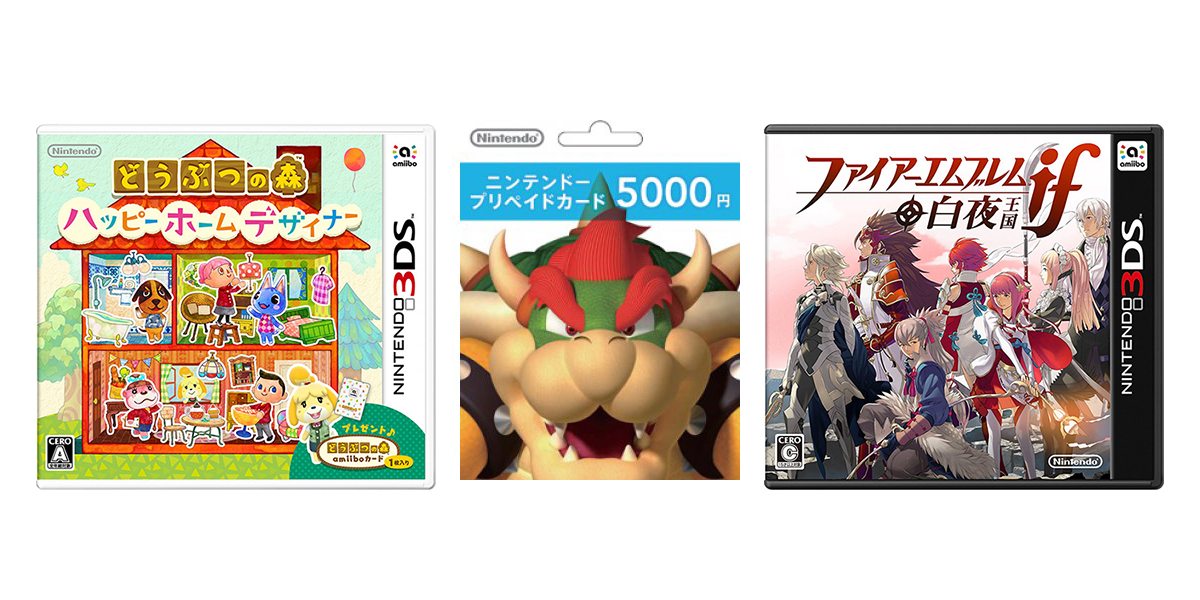A statement made by Nintendo of America’s COO Reggie Fils-Aimé at an E3 event earlier this year has again sparked debate over whether or not the New Nintendo 3DS will be coming stateside in the foreseeable future. This little brother to the current New Nintendo 3DS XL has thus far been a no-go in our region, but it’s moderate screen size, SNES-colored buttons, and swappable faceplates have made the device the darling of the Nintendo faithful–myself included.
While I’m certainly hopeful that this iteration of the 3DS will eventually be made domestically available, I remain unconvinced. So much so that I went out of my way to import a New Nintendo 3DS from Japan.
While Nintendo handhelds all the way up to the wildly popular Nintendo DS system were region-free, allowing gamers to import games from anywhere without a second thought, the 3DS line is not. This means that it’s no longer as easy as simply sticking a cartridge in a slot and beginning your foreign language adventure. Now the process is a little more labor intensive, it requires a bit more forethought and dedication. Thankfully, I have both to spare.
So what’s the real difference between this and domestic 3DS models?
Not surprisingly, the biggest difference between the New 3DS and New 3DS XL (and, for that matter, all the other models) is size. While the New 3DS XL is pretty similar to the original XL with regard to footprint and screen size–save accommodations made for the additional shoulder buttons, a second analog control nubbin, and the like–the New 3DS sort of sits in an interesting middle ground between the standard 3DS and XL.
Specifically, both the top and bottom screens, while obviously not eXtra Large, are larger than those of the original 3DS–3.88″ and 3.33″ up from 3.53″ and 3.02″. The casing too has been expanded to house these upsized screens and the additional controls.
There are also some differences with regard to onboard content. In addition to providing access to traditional import gaming titles, there are some other interesting functional (and cultural) variances highlighted by an imported system.
Because of Japan’s differing approach to licensing and copyright, not only are there far more system themes available for download, but you’re likely to see options from an array of unexpected third-party sources: from Japan Pro Wrestling to Hello Kitty to Peanuts. There’s also a 3DS-specific music shop and (my personal favorite) the Collectible Badge Center.
This skill claw simulator allows you to earn decorative badges with which to adorn your system menu, as well as game-themed replacement icons for things like the eShop, Mii Plaza, and Sound player. Like physical claw machines, the game can sometimes feel a little cheap and gimmicky, and then there’s the pricing scheme–which is weird to say the least.
You can buy five tries for 90 Yen (somewhere between 70 and 75 cents, dependent on market fluctuation). You can also get 10 tries for 180 Yen, plus at this price you also score a bonus exclusive 3DS theme, which usually relates to whatever new game/property is currently being featured in the CBC.
You can even earn free tries once a day in a specialized training mode. The training machine will have the same layout as one of the claw machines currently available in the game-proper, though the badges themselves appear as blank wooden slugs of the original designs. You get one point for each badge successfully liberated from the claw machine, and ten points scores you a free try (expressed as a “coin”) on one of the real machines. The badges are flipped over during the scoring phase, and some may be revealed during this final tally to be worth additional coins, designated by blue or red bullseye patterns.
Where do you even buy an import system?
There are any number of reputable import retailers online, but don’t discount more mainstream shops. Amazon always has a decent selection of Japanese-region New Nintendo 3DS systems available–many with free Prime shipping and some can occasionally even be found in the discounted Amazon Warehouse storefront. (For the record, mine was a like-new model procured from Amazon Warehouse deals; it was new in box, but said box was slightly damaged.)
If I can’t read Japanese how will I even set it up?
Here’s the real sticking point–overcoming the language barrier for those unable to read Japanese can be a chore. The New 3DS was made available in some European territories, as well as in Australia/New Zealand, so those options exist if a native language interface is a deal-breaker. However I’ll remind you that, since the 3DS line is region locked, you’ll only be able to play content from the machine’s place of origin. Since most major Nintendo fanboys are more inclined to be interested in Japanese content, that’s likely the model a motivated importer is eying.
Thankfully, even for those of us with no Japanese language experience, there are many great resources and tutorials available to help you through the setup process and in creating a Japanese NNID. With these initial steps taken care of, the fact that the menu structure is virtually identical to that of the domestic system also helps in a pinch–at least for those in multiple-3DS households.
So I can’t play any of my existing games on it?
Pretty much. I mean, there’s a hack available that can suppress the region blocking, but that paints users into a corner with regard to keeping current on system updates. Plus, if you’re going to all the trouble to track down and purchase a Japanese system, you probably already have your eye on one or more pieces of Japanese content.
That being said, while 3DS titles must match the region of the system on which you wish to play them, remember that original Nintendo DS titles are region free. This means that you can play all your legacy DS carts regardless of country of origin.
How do I go about buying games?
Just like the system itself, Japanese content is available from a pretty diverse number of sources. Play Asia is a personal favorite for physical releases, though the price of international shipping tends to make me wait until there are a number of items on my wish list rather than picking things up one at a time. Amazon too offers a solid amount of Japanese cartridges for sale from both third party sellers and their own shipping warehouses.
Of course, the easiest way to procure import content is from the eShop. In addition to allowing quick access to big-name franchises without waiting on your mailman–both Fire Emblem if and Animal Crossing: Happy Home Designer are currently available for download–the Japanese storefront also includes a lot of properties that have never made it to the West, not to mention Virtual Console titles that are otherwise difficult to acquire here in the States.
American credit cards will work in the Japanese eShop, but beware that some will charge an additional fee for foreign currency transactions. The best bet, for my money, is instead to buy eShop cards. I’ve purchased prepaid currency cards through Amazon, and I’ve also picked up digital codes from Play Asia. (They just email you the card’s redemption code, so shipping isn’t an issue.)
More recently, I even tried my hand at online specialty shop Solaris Japan. Solaris also sells prepaid cards by simply emailing the purchaser the redemption code. They accept PayPal, which is a plus, and my code arrived in my inbox in less than 24 hours.
The best thing about the eShop for foreign release content is the ease of use, the immediate gratification, and the near constant parade of sale prices and special promotions. The worst thing–for me, at least–is always having to remind yourself about conversion rates. Is that deal really a deal when translated into your local currency? Be prepared to do the math.
What about accessories?
Some of your existing standard Nintendo 3DS accessories may accommodate the New 3DS, but many won’t. Since the top screen is larger than the previous iteration, domestic screen covers won’t jive, and, while standard zip cases may accommodate the larger footprint of the New Nintendo 3DS, low profile sleeves or systems skins will not.
You can find all manner of accessories specifically designed for this newer model at your favorite import retailer (and, yes, also via Amazon), but surely the hottest commodity is the line of 3DS cover plates. Though the allure of finally being able to play Super Robot Wars UX and the original Famicom Wars had long drawn me toward importing, it was the customizable, collectable slant of these “Kisekae Plates” that pushed me over the edge.
Rather than feel that pang of regret every time a new exclusive system design comes out, I can now simply purchase and swap out cover plates to give my New Nintendo 3DS a proper makeover. Not only do they come in an array of styles inspired by your favorite Nintendo franchises, but they also offer an impressive selection of colors and finishes. The matte design of my K.K. Slider plate is totally different from the textured feel of my Kirby plate, and both pale in comparison to the glossy glow of my newest Fire Emblem cover.
Bottom line: how big a hassle is importing a Japanese New Nintendo 3DS?
Look, I’m a project guy. Every so often I like to pick up a new skill or learn how to use a new tool or make a new thing. This New Nintendo 3DS? It’s my current project.
Stuff like figuring out how to make my way through mountains of foreign text or trying to find a deal on a new system accessory really appeals to me. I love gaming, handheld gaming in particular, but I also like the challenge figuring out how to make things work.
It certainly doesn’t hurt that there’s already a strong fan community out there continually cranking out resources. (The Japanese 3DS Tumblr and NeoGAF’s 3DS import thread are fast becoming my most visited sites.)
If what you’re looking for is just another way to game, perhaps the import route isn’t for you. If, instead, you’d like to approach your longtime hobby from a total different perspective–and you don’t mind the occasional challenge or expense–then the New Nintendo 3DS is a fun way to go.
And if we eventually do end up with a similar 3DS model available here in the US of A? Well, at least I’ve already secured my favorite cover plates, leash pens, and other accessories!







Now hold on, Z. Just because you bought a New 3DS from Japan doesn’t mean that you still can’t play your games on it. I found a tutorial on how to create a non-XL New 3DS that can read this region’s games. https://gbatemp.net/threads/how-to-create-a-north-american-non-xl-new-3ds.387818/
Yes, I actually mention this region hack in the post.